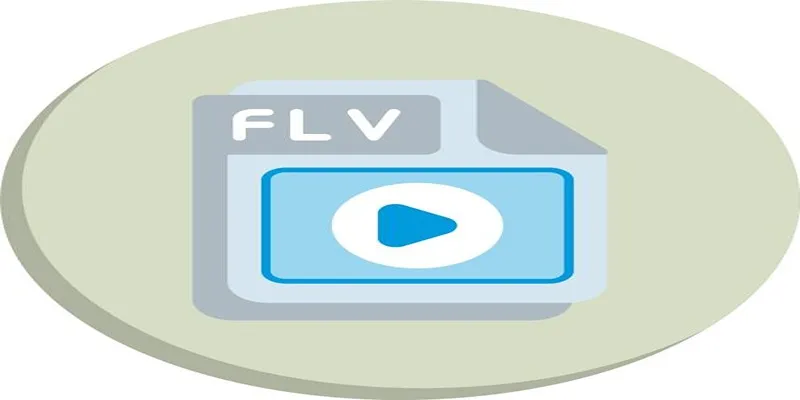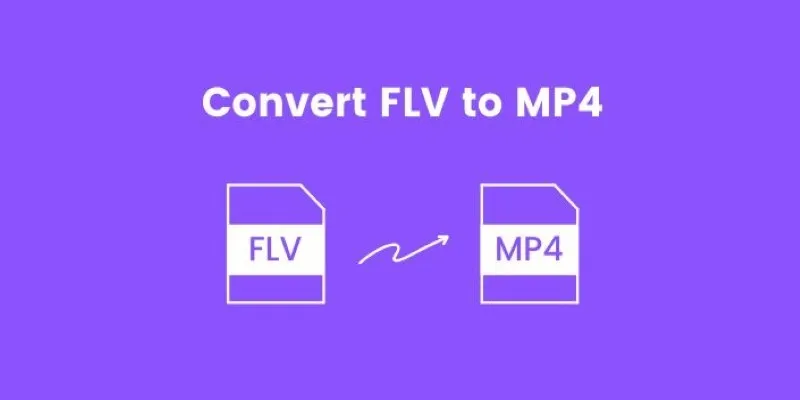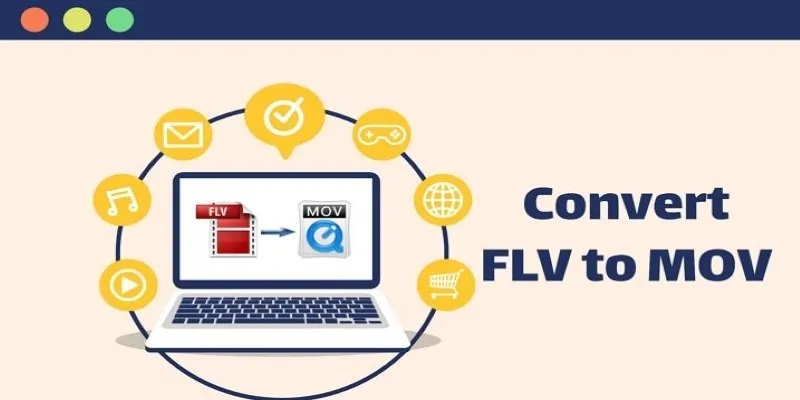How to Convert M4V to FLV: 5 Simple and Useful Ways
Converting video files can be tricky, especially with different formats like M4V and FLV. M4V is popular for Apple devices, while FLV is commonly used for online streaming due to its small size and compatibility. If you need to convert M4V to FLV, don’t stress! This guide offers five simple, effective methods to make the process easy, whether you’re just starting out or already experienced.
Why Convert M4V to FLV?

- Smaller File Sizes: FLV files are compact and ideal for web streaming, saving you storage space and enhancing loading speeds.
- Better Streaming Compatibility: FLV works seamlessly on platforms like YouTube, making it an excellent choice for creators or businesses.
- Device Compatibility Issues: Videos in M4V format are often tied to Apple devices, while FLV offers broader compatibility with different applications and platforms.
1. Using Wondershare UniConverter
Wondershare UniConverter is a versatile tool that simplifies video format conversions, including M4V to FLV. With its user-friendly interface and powerful features, it ensures high-quality results while saving time, making it an excellent choice for both professionals and beginners.
How to Use Wondershare UniConverter for M4V to FLV Conversion
- Download and Install: Start by downloading Wondershare UniConverter from its official website and installing it on your computer. Follow the installation prompts to complete the setup.
- Import the M4V File: Open the software and click on the Add Files button to upload your M4V video. You can also drag and drop the file into the interface for convenience.
- Select the Output Format: Go to Output Format at the bottom and select FLV.
- Start Conversion: Click the Convert button to begin the process. The software will quickly convert your M4V file to FLV, ensuring high quality while saving time.
- Save and Use: Once the conversion is complete, locate the FLV file in the output folder and use it on your preferred platforms or applications.
2. OnlineVideoConverter
OnlineVideoConverter is a free, web-based tool that enables quick and convenient M4V to FLV conversions without requiring any software installation. Ideal for casual users, it supports various formats, ensuring accessibility and ease for video conversion tasks on-the-go.
How to Use OnlineVideoConverter
- Visit the Website: Open your preferred browser and navigate to the OnlineVideoConverter website.
- Upload Your File: Click on the upload button and select the M4V file you wish to convert from your device.
- Choose the Output Format: Select FLV as the desired output format from the available options.
- Start the Conversion: Click the “Convert” button to begin the process and allow the tool to handle the conversion.
- Download the File: Once the conversion is complete, download the FLV file to your device and save it to your desired location.
3. HandBrake
HandBrake is a versatile, open-source video transcoder compatible with multiple platforms. Supporting numerous formats, it is ideal for those seeking advanced customization options. Its user-friendly interface and powerful features make it a reliable tool for converting M4V to FLV efficiently.
How to Use HandBrake to Convert M4V to FLV
- Download and Install HandBrake: Visit the official HandBrake website and download the software compatible with your operating system. Install it by following the on-screen instructions.
- Launch HandBrake and Import Your File: Open HandBrake and click on the “Open Source” button to locate and upload your M4V file.
- Choose Output Format: Under the “Summary” tab, select FLV as the desired output format from the dropdown menu.
- Adjust Settings (Optional): For advanced users, explore the additional settings such as resolution, bitrate, or frame rate to optimize the output file according to your needs.
- Select Output Destination: Browse and select a folder where the converted FLV file will be saved.
- Start Conversion: Finally, click the “Start Encode” button to begin the conversion process. Wait until the task is completed, and your new FLV file will be ready to use.
4. Freemake Video Converter
Freemake Video Converter is a free, beginner-friendly tool that supports a wide range of video formats. With straightforward functionality and quick processing, it is an excellent choice for converting M4V to FLV while maintaining good quality and ease of use.
How to Use Freemake Video Converter
- Download and Install: Visit the official Freemake website and download the video converter software. Follow the installation instructions to set it up on your system.
- Add Files: Launch the software and click the “+Video” button or drag and drop your M4V file into the interface.
- Select Output Format: From the bottom menu, choose “to FLV” as your desired output format.
- Customize Settings: Adjust the video resolution, frame rate, or other settings if needed for your converted file.
- Set Output Folder: Specify the folder where the FLV file will be saved after conversion.
- Start Conversion: Click the “Convert” button to initiate the process. Once completed, your FLV file will be ready for use.
5. CloudConvert
CloudConvert is a versatile online tool that supports numerous file formats, including M4V and FLV. With its customization options and secure processing, it is ideal for users seeking a simple, browser-based solution for video conversion tasks.
How to Use CloudConvert for Converting M4V to FLV
- Access CloudConvert: Open your web browser and visit the CloudConvert website at www.cloudconvert.com.
- Upload Your File: Click on the “Select File” button and choose the M4V file you want to convert from your computer, cloud storage, or by providing a file URL.
- Choose Output Format: Select “FLV” as the desired output format from the available options.
- Adjust Settings (Optional): Customize conversion settings, such as resolution or file size, if needed, by clicking on the “Options” menu.
- Start Conversion: Click the “Convert” button to begin the process. Wait for the conversion to complete.
- Download Your File: Once the conversion is finished, download the FLV file to your device by clicking the “Download” button.
This straightforward process makes it easy to convert videos quickly with minimal effort.
Tips for Successful Conversion

- File Backup: Always keep a backup of your M4V files before starting the conversion to avoid accidental data loss.
- Check Quality Settings: Pay attention to resolution and compression settings to ensure no loss of quality during the conversion.
- Match Your Needs: Match the tool to your requirements. For quick and simple tasks, online converters work best, while desktop applications offer more control.
Final Thoughts
Converting M4V files to FLV may initially seem challenging, but with these five methods, you’re equipped to handle the task with ease, regardless of technical expertise or workflow preferences. Whether you prefer an intuitive GUI or robust command-line interface, there’s a tool on this list tailored to your needs. With these tools at your disposal, you can effortlessly convert M4V files to FLV and enjoy your videos on any device.
Related Articles

How to Convert FLV to MP4 for Free: Top Tools and Easy Methods

5 Simple Ways to Convert FLV Files to MOV Format on Windows

TIFF File Format Explained: Uses, Benefits, and When to Avoid It

MPEG to MP3 Conversion Made Easy: A Complete Guide

Best Practices for Converting AVI Files to JPG Format

Top DAT to DIVX Converters for Windows and Mac Users

Simplest Methods to Convert AVI Files into XviD, SWF, or FLV Formats

Top Tools to Convert MXF Files for Seamless Sony Vegas Compatibility

Discover the Top 5 Tools for Effortless AVI Video Conversion

Top Tools to Easily Convert FLV to DivX H.264/H.265

Best Methods to Convert MTS Files for TV Compatibility

The 8 Best To-Do List Apps for Android in 2025
Popular Articles

Step-by-Step Guide to Making a Video Essay That Inspires

Top Client Onboarding Tools for Online Businesses in 2025

The 5 Best Bitrate Converters to Enhance Your Media Experience

How to Show and Hide Text in WordPress Posts with the Toggle Effect: A Guide

Convert MOV to VOB Free and Online with These Simple Tools

Best Text-to-Speech Programs for Windows with Natural Voices 2025

How to Crop and Edit WordPress Post Thumbnails for Better Visuals

Step-by-Step Tips to Create Engaging Tutorial Videos That Your Audience Will Love

AI Highlight Video Makers: Top 3 Tools to Capture Best Moments

The Ultimate Comparison: Hootsuite vs. Buffer for Social Media Success

Adding a Featured Image Column in WordPress Admin

 mww2
mww2